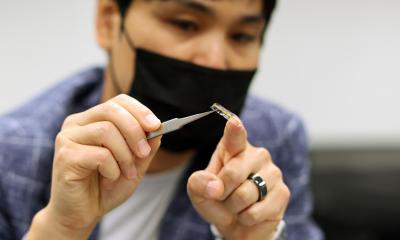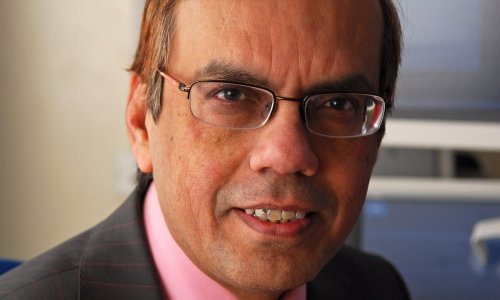When the heart gives up
Congress focuses on cardiac insufficiency
This April the 77th Annual Meeting of the German Cardiac Society (DGK) presented over 300 events with 1,800 speakers, covering the entire spectrum of cardiovascular diseases, from fundamental research to clinical routine. Professor Gerd Hasenfuss, Director of the Department of Cardiology and Pulmonology and Chair of the Heart Research Centre in Gottingen, particularly requested a focus on cardiac insufficiency and regeneration.


Cardiac insufficiency, one of the most common cardiovascular diseases, often occurs after myocardial infarction. Impaired diastolic as well as systolic function not only lead to severe limitations in ability, but also to increased mortality rates. Around 50% of cardiac insufficiency patients die from arrhythmia, rather than cardiac pump dysfunction.
What can be done to help these patients? ‘In recent years, an important finding is that, rather than going easy on themselves, the affected patients should optimise their cardiac function through physical exercise,’ Prof. Gerd Hasenfuss advised. ‘Endurance training is an important building block to improve the disorder.
‘There are also many new technological developments in the field of pacemakers and pumping systems. During the advanced stage of the disease, it’s now possible to implant miniature pumps as an alternative to heart transplants. This is particularly suitable for older patients who, in view of the scarcity of donor organs, don’t make it onto the transplant registers.
‘In addition to surgical procedures, catheter procedures are also becoming increasingly important, for example to treat defects of the mitral valve, where the valve can no longer prevent blood in the ventricles from flowing back into the atrium. Patients in the final stage of the disease often also suffer impaired kidney function. Although there are not many treatment options available yet, it’s very important to customise treatment individually if kidney problems are also present.
Cardiac regeneration
Prof. Hasenfuss: ‘Basically, this term refers to the use of stem cells to replace scar tissue with new heart muscle tissue for the restitution of cardiac function. Although, in this sense, cardiac regeneration can not yet be carried out on a patient, it’s already possible to grow new heart tissue in vitro. However, in order to grow heart muscle cells from other body cells in the future, the suitable stem cells need to be identified.
‘There are already some studies where bone marrow stem cells were used for patients with myocardial infarctions, which led to a partial improvement of cardiac function,’ he added. ‘However, these studies have also shown that bone marrow cells actually do not grow and develop into heart muscle cells in the tissue. Therefore, at the Heart Centre in Gottingen, we are trying to identify other stem cells that could develop into heart muscle cells. It’s already possible to change hair cells into cardiac muscle cells, but this requires viruses to feed the genetic material into the cells. Moreover, you must ensure that these cells do not grow into tumours.
‘Stem cell research not only provides us with the opportunity for regeneration but also helps with research into the causes of diseases, so that new drugs can be developed.
‘Another study in our centre deals with leaks in calcium storage. Calcium is the intracellular transmitter substance that activates the heart muscle cell. The storage mechanism, as we’ve discovered in our clinic, leaks in patients with cardiac insufficiency. The respective drugs to repair these leaks are currently being clinically trialled.’
Imaging research
‘The main question here is how to detect heart problems on an intact organism without a catheter and with as little radiation exposure as possible,’ the professor explained. ‘In my view, the way forward is MRI scanning. We are carrying out a large research project in Gottingen into the use of real-time MRI, in cooperation with the Max-Planck-Institute.
‘We can already generate a high time resolution of 50-100 images per second, which means we can generate all images during just one heart cycle. Heart wall motion abnormalities, perfusion or the movement of different parts of the heart become much more visible,’ said Prof. Hasenfuss, adding: ‘The long term objective is to carry out angiographies and interventions with the help of the MRI scanner. This would be particularly interesting for the ablation of arrhythmias. We hope to be able to detect instantly whether disrupting the electrical circuit has been successful with the help of MRI. This procedure should be ready to use in about five years.’
Interview: Karoline Laarmann
19.04.2011











